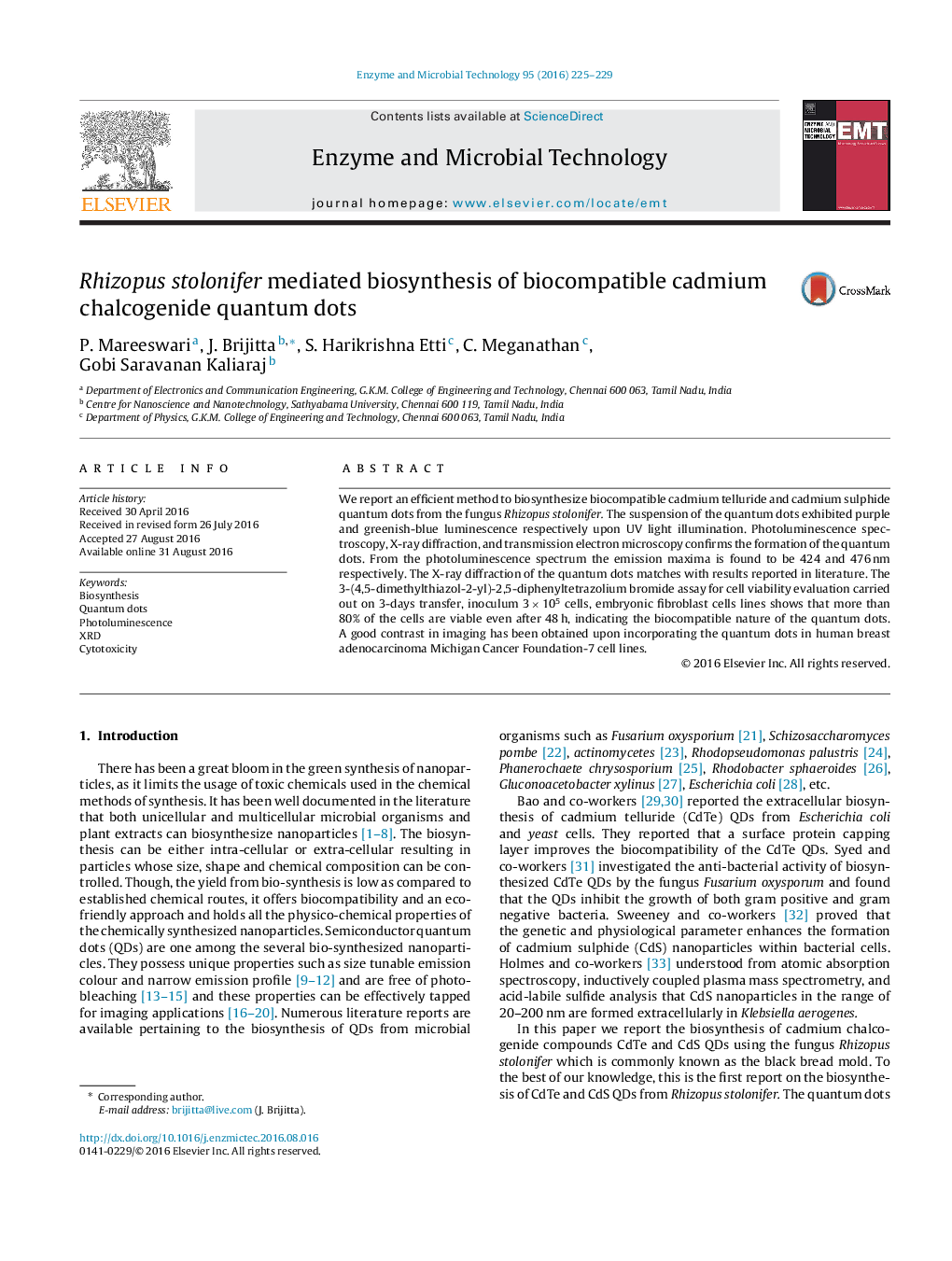| Article ID | Journal | Published Year | Pages | File Type |
|---|---|---|---|---|
| 4752817 | Enzyme and Microbial Technology | 2016 | 5 Pages |
We report an efficient method to biosynthesize biocompatible cadmium telluride and cadmium sulphide quantum dots from the fungus Rhizopus stolonifer. The suspension of the quantum dots exhibited purple and greenish-blue luminescence respectively upon UV light illumination. Photoluminescence spectroscopy, X-ray diffraction, and transmission electron microscopy confirms the formation of the quantum dots. From the photoluminescence spectrum the emission maxima is found to be 424 and 476Â nm respectively. The X-ray diffraction of the quantum dots matches with results reported in literature. The 3-(4,5-dimethylthiazol-2-yl)-2,5-diphenyltetrazolium bromide assay for cell viability evaluation carried out on 3-days transfer, inoculum 3Â ÃÂ 105 cells, embryonic fibroblast cells lines shows that more than 80% of the cells are viable even after 48Â h, indicating the biocompatible nature of the quantum dots. A good contrast in imaging has been obtained upon incorporating the quantum dots in human breast adenocarcinoma Michigan Cancer Foundation-7 cell lines.
